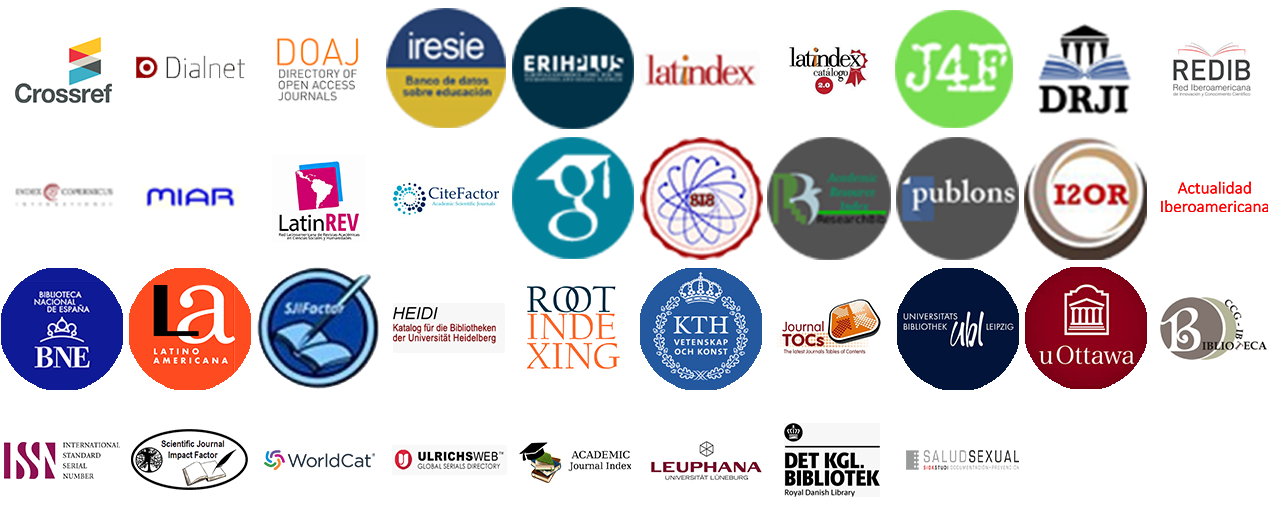USE OF THE EDUCATIONAL SOFTWARE AS STRATEGY TO PROMOTE THE LECTURE
DOI:
https://doi.org/10.36825/RITI.05.09.006Abstract
The low rates and deficiencies in reading in Mexico have been observed both in the results of the PLANEA (National Plan for the Evaluation of Apprenticeships) test carried out by the Secretaría de Educación Pública, and in the performance shown in the PISA test (Programa for the International Student Assessment), where Mexico is below the average in the Organización para la Cooperación y el Desarrollo Económico (OECD) [1], this is due to the lack of habit for this activity where more than 70% of Mexicans do not read a single book a year [2], for this reason it seeks to promote reading through the use of new technological tools. The objective of this work is to make a proposal as a strategy to attend and strengthen the learning of reading and writing using Information and Communication Technologies (ICT). For this, a qualitative methodology was used and tools were applied to collect information to analyze the practices that are used by teachers and students. From the above, an educational software was designed that allows students to read, analyze and understand texts and then use it in everyday life, and with this tool they will be able to enter into reading, feeling part of it, awakening their creativity and imagination.
References
OCDE (2016). PROGRAMA PARA LA EVALUACIÓN DE ALUMNOS (PISA) PISA 2015 – RESULTADOS.URL: https://www.oecd.org/pisa/PISA-2015-Mexico-ESP.pdf. (03.04.2017).
Camacho, R. (2013). La lectura en México, un problema multifactorial. URL:http://www.redalyc.org/pdf/281/28128741003.pdf. (03.04.2017).
Prensky, M. (2010). Nativos e Inmigrantes Digitales. URL:http://www.marcprensky.com/writing/Prensky-NATIVOS%20E%20INMIGRANTES%20DIGITALES%20(SEK).pdf. (03.04.2017).
INEGI (2015). Encuesta Nacional Sobre Disponibilidad y Uso de Tecnologías de la Información. URL:http://www.inegi.org.mx/est/contenidos/proyectos/encuestas/hogares/modulos/endutih/. (03.08.2016)
UNESCO (2017). Las tecnologías de la información y la comunicación (TIC) en la educación. URL:http://www.unesco.org/new/es/unesco/themes/icts/. (03.04.2017).
SEP (2011). PROGRAMAS DE ESTUDIO 2011 GUÍA PARA EL MAESTRO. Educación Básica Secundaria. Español. URL:http://formacion.sigeyucatan.gob.mx/formacion/materiales/4/6/d1/p2/1.%20SEP%20PROGRAMASDEESTUDIO2011.GUIAPARAELMAESTRO.EDUCACIONBASICA.SECUNDARIA.ESPAOL.pdf. (03.08.2016).
Aguilar, Y.; Valdez, J.; González, N.; Rivera, S.; Carrasco, C.; Gómora, A.; Pérez, A.; Vidal, S. (2015). Desmotivación, desinterés, desgano y falta de participación en adolescentes mexicanos.URL:http://www.redalyc.org/articulo.oa?id=29242800010 (12.03.2017).
Aguirre, R. (2000). Dificultades de aprendizaje de la lectura y escritura. URL:http://www.redalyc.org/articulo.oa?id=35601102. (12.03.2017).
Zhong Sun, Xianmin Yang. The design and application of a software: Promoting deep-level reading in the Web-based classroom in Chinese primary school. Second International Symposium on Intelligent Information Technology Application. 2008 IEEE. DOI 10.1109/IITA.2008.366.
Yalin Kilic TUREL. Designing instructional materials for teaching surahs and duas for elementary school students in Turkey. 2013 Taibah University International Conference on Advances in Information Technology for the Holy Quran and Its Sciences. 2013 IEEE DOI 10.1109/NOORIC.2013.29.
Wiebke Köhlmann, Ulrike Lucke. Non-Visual Usage of Virtual Classrooms An Analysis Using Screen Reading Software. 2014 IEEE 14th International Conference on Advanced Learning Technologies. 2014 IEEE DOI 10.1109/ICALT.2014.172.
Antonio Manuel Rodrigues Manso y otros. Letrinhas: promoting reading through mobile devices. 2015 International Symposium on Computers in Education (SIIE). 2015 IEEE. DOI: 10.1109/SIIE.2015.7451648.
Pankaj Singh y otros. Diversified Courseware Technology: A New Hope to Enhance the Educational Achievement of Students with and without Special Needs in the Inclusive Classroom. 2013 IEEE International Conference in MOOC, Innovation and Technology in Education (MITE).
Roberto Antônio da Silva, Edson Pinheiro Pimentel. Computational environment based on Applied Behavior Analysis to support child reading education. 2016 XI Latin American Conference on Learning Objects and Technology (LACLO).
Adalberto Bosco C. Pereira y otros. A Fuzzy System for Educational Tasks for Children with Reading and Writing Disabilities. I. Hatzilygeroudis and V. Palade (eds.), Combinations of Intelligent Methods and Applications, Smart Innovation, Systems and Technologies 23, DOI: 10.1007/978-3-642-36651-2_4, Springer-Verlag Berlin Heidelberg 2013.
Magda Nikolaraizi, Ioanna Vekiri. The design of a software to enhance the reading comprehension skills of deaf students: An integration of multiple theoretical perspectives. Education and Information Technologies (2012). 17:167–185 DOI 10.1007/s10639-011-9152-1.
Salazar, S.; Ponce, D. (1999). URL:http://www.redalyc.org/articulo.oa?id=16100203. (03.04.2017).
Tello, E. (2008). Las tecnologías de la información y comunicaciones (TIC) y la brecha digital: su impacto en la sociedad de México. URL:http://www.uoc.edu/rusc/4/2/dt/esp/tello.pdf. (03.08.2016).
Obregón, N. (2006). Quién fue María Montessori. URL:www.redalyc.org/pdf/281/28101007. (03.08.2016).
Vidal, M.; Gómez. F.; Ruiz, A. (2010). Software educativos. URL:http://scielo.sld.cu/pdf/ems/v24n1/ems12110.pdf. (03.08.2016).
Rojas, I. (2011). Elementos para el diseño de técnicas de investigación: una propuesta de definiciones y procedimientos en la investigación científica. URL:http://www.redalyc.org/articulo.oa?id=31121089006. (03.04.2017).
Díaz, L.; Torruco, U.; Martínez, M.; Varela, M. (2013). La entrevista, recurso flexible y dinámico. URL:http://www.redalyc.org/articulo.oa?id=34973322800. (03.04.2017).
Romero, N. (2010). Lectura, escritura y educación. URL:http://www.redalyc.org/articulo.oa?id=403041705012. (03.08.2016).
Downloads
Published
How to Cite
Issue
Section
License
Copyright (c) 2017 Revista de Investigación en Tecnologías de la Información

This work is licensed under a Creative Commons Attribution-NonCommercial 4.0 International License.
Esta revista proporciona un acceso abierto a su contenido, basado en el principio de que ofrecer al público un acceso libre a las investigaciones ayuda a un mayor intercambio global del conocimiento.
El texto publicado en la Revista de Investigación en Tecnologías de la Información (RITI) se distribuye bajo la licencia Creative Commons (CC BY-NC
 ), que permite a terceros utilizar lo publicado citando a los autores del trabajo y a RITI, pero sin hacer uso del material con propósitos comerciales.
), que permite a terceros utilizar lo publicado citando a los autores del trabajo y a RITI, pero sin hacer uso del material con propósitos comerciales.



